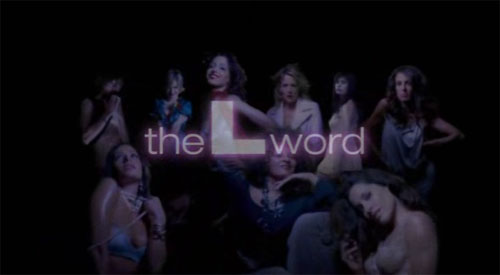As a baby dyke, I remember waiting every week for Ellen (ABC) to come on the air. My friends and I had Ellen nights and looked forward to the inside dyke jokes, prior to her coming out. This was the early 90s, and though DeGeneres was not out, we all knew she was one of us. We finally had our representative on television. After Ellen came out, a warning label preceded her show, advising parental guidance and the show was soon cancelled as a result of the controversy. Since then, the lesbian community has not had much television representation aside from a few supporting, generally asexual, lesbian or bisexual characters with sparse, desexualized social lives scattered amidst a heteropatriarchy.1 That is, until The L Word came out in January 2004. Showtime did what no other channel had yet done; they gave lesbians a show. Not closeting its humor and lesbian sexuality, or labeled with warnings telling us to put our kids to bed.2 This show was more than just a quick kiss between women. It gave lesbians a place in society. We had our own little soap opera.
While few people watched the first season of The L Word go on the air,3 from the moment the first episode aired, those who did watch blew up the internet with their reactions to the show. The L Word was renewed for a second season after only two episodes aired (Shister). Word about the show spread quickly, and queers and straights alike anxiously waited ten months for the premier of the second new season. During this break, the buzz did not stop; fans questioned the sexuality of actors, discussed who was leaving the show and pondered the cliffhangers we were left with. Though many briefly questioned its content, a deep analysis was lacking. Issues such as transgender and domestic violence were brushed under the rug in favor of discussions of which actors were hot and which were not.

Screenshot from credits of season 3.
Initially, producers boasted that The L Word represents "a broad swath of lesbian life," that they were trying to shatter stereotypes (Lee). But while some representations did mirror lesbian identities, even more identities were left out.4 In response to criticism, several of the actors and directors later said that though they try to be as inclusive as possible, not everyone is going to see themselves ("The L Word Defined").5 In presumably attempting to break stereotypes and be as inclusive as possible, is The L Word actually conforming to, or reinforcing, the male gaze?6 Many of us yearn to see ourselves represented in mainstream culture—therefore grabbing onto any remotely plausible representations of lesbians. Only by stepping back and analyzing shows like The L Word for the way in which they represent lesbian culture and for the effect these representations have can we examine both the positive results of greater exposure of queers, together with the negative aspect of this exposure. Images that lack an analysis of the complexity of queer life can be detrimental to queer identity and to those who are coming out. While The L Word is a positive step for queer visibility, the characterizations on the show exclude many queer identities, apparently in the interest of creating a new consumption based "lesbian" identity.
Unfortunately, there is not enough serious, scholarly discussion of TLW and there should be because even
though the show seems very commercial and not always aimed at lesbians, it is breaking new ground historically. For that reason alone, it merits careful analysis. In fact, the ways that the show tries to represent lesbianism in order to
appeal to a mass audience are important to look at because they say a lot about what visions of lesbians are
deemed acceptable for consumption as entertainment.

